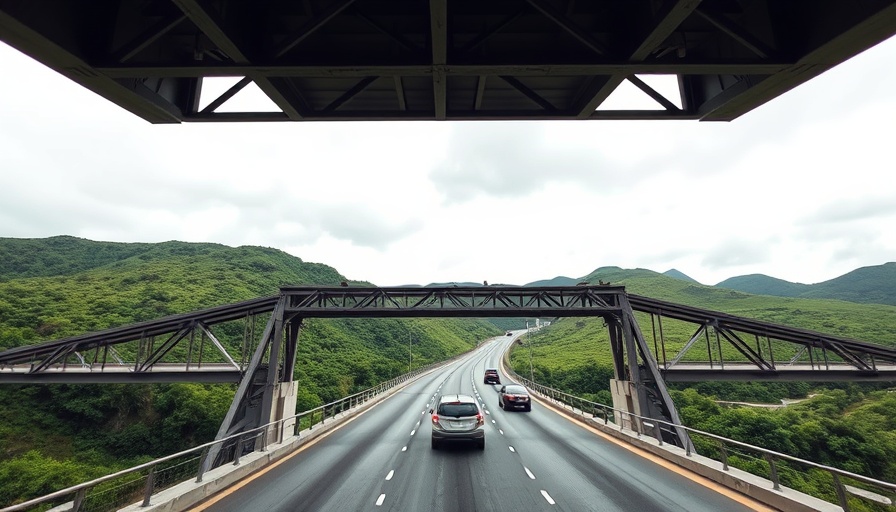
The Importance of the Wallis Annenberg Wildlife Crossing
The Wallis Annenberg Wildlife Crossing, a pioneering project in Agoura Hills, California, represents a crucial step in the preservation of wildlife ecosystems. As the largest wildlife crossing of its kind to date, this overpass not only facilitates safe passage for animals but symbolizes a broader commitment to protecting biodiversity. Placed strategically over California's bustling 101 freeway, it assists species such as bobcats, mountain lions, and deer in transitioning between habitats without the threat of busy roadway traffic.
Connecting Habitats: A Revolutionary Concept
The engagement of the Annenberg Foundation has been pivotal in bringing this project to fruition. As philanthropist Wallis Annenberg noted, laying the first layers of soil signifies progress toward a thriving future for local wildlife. It acknowledges a significant reality: with urban expansion, our wildlife faces increasing habitat fragmentation. By reconnecting ecosystems, the wildlife crossing exemplifies the principle that conservation efforts must include fostering connectivity between habitats.
The Urgent Need for Wildlife Crossings
The necessity for projects like the Wallis Annenberg Wildlife Crossing becomes glaringly apparent when we consider the alarming decline of wildlife populations in California. Isolated populations of mountain lions, particularly those near the 101 freeway, show troubling genetic issues, including birth defects. Such concerns highlight the impact that fragmented habitats have on species survival. The crossing is not just a solution; it’s a lifeline for these animals facing the consequences of urban encroachment.
Future Directions: A Blueprint for Conservation
More than just a bridge, the Wallis Annenberg Wildlife Crossing serves as a template for future conservation initiatives. By prioritizing habitat connectivity, we not only provide safe passages for wildlife but also take steps toward restoring ecological balance. Visionaries in environmental science emphasize that these types of solutions should be at the forefront of conservation strategies moving forward. With the project expected to complete in the next year and involving over 6,000 cubic yards of soil, the initiative illustrates the large-scale efforts required to address environmental challenges.
Community Involvement: The Key to Success
Community engagement is crucial to the wildlife crossing’s success. Beyond construction, local support serves as a reminder that protecting wildlife transcends mere infrastructure development. When communities recognize the value of biodiversity, they can advocate for further efforts to sustain and nurture local ecosystems. With events highlighting the importance of wildlife conservation growing more common, the crossing can inspire future projects and collaborations that place wildlife before urban expansion.
Conclusion: Take Action for Biodiversity
As the Wallis Annenberg Wildlife Crossing progresses, it serves as a beacon reflecting our responsibility towards nature. Not only does it highlight the need for connectivity in preserving biodiversity, but it also calls for collective action. Understanding our role in supporting wildlife and advocating for sustainable practices is more essential than ever. Let’s honor these efforts by staying informed, supporting local initiatives, and amplifying voices that protect wildlife.
 Add Row
Add Row  Add
Add 




Write A Comment